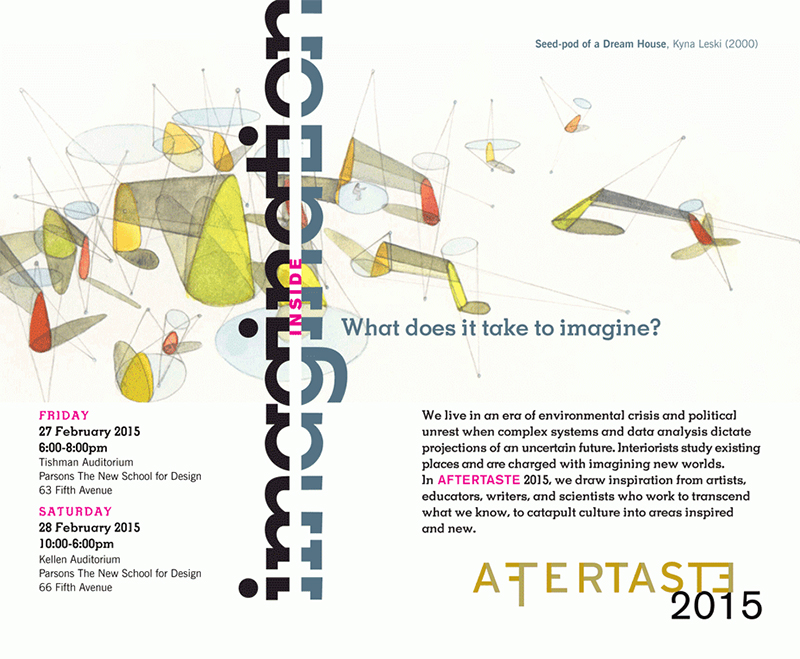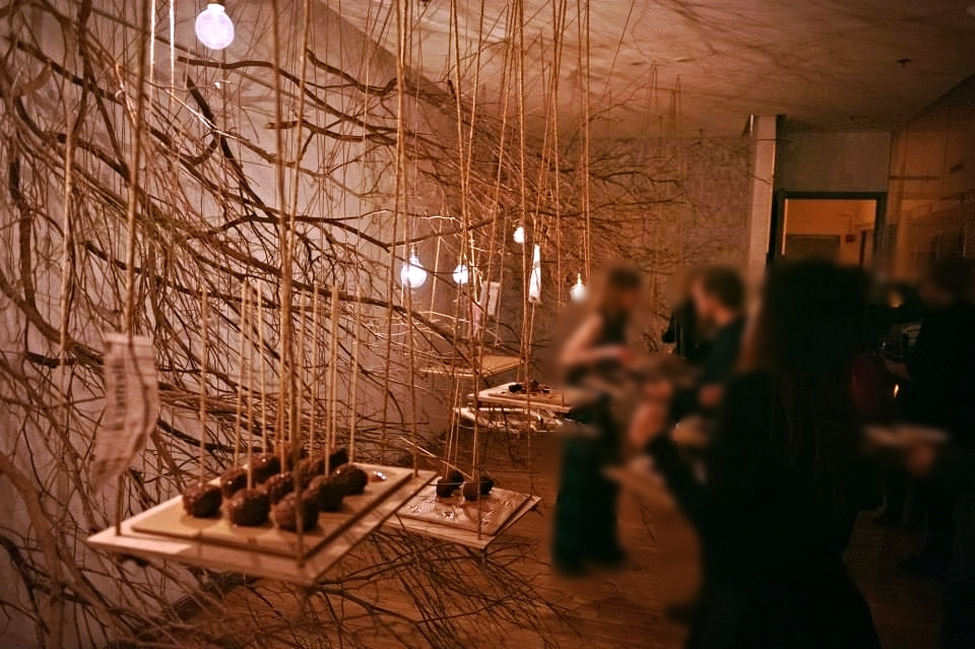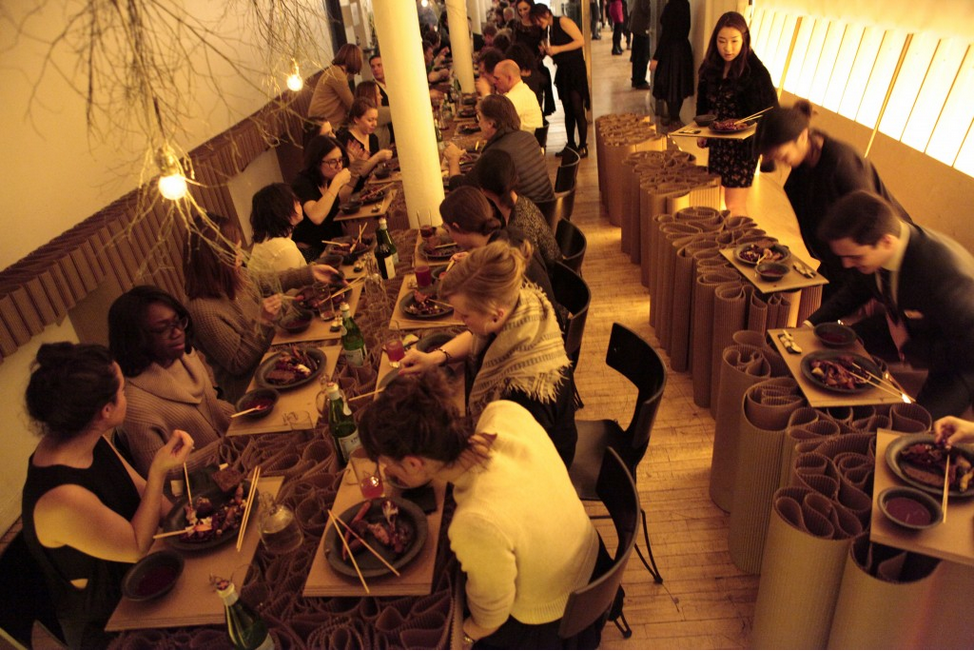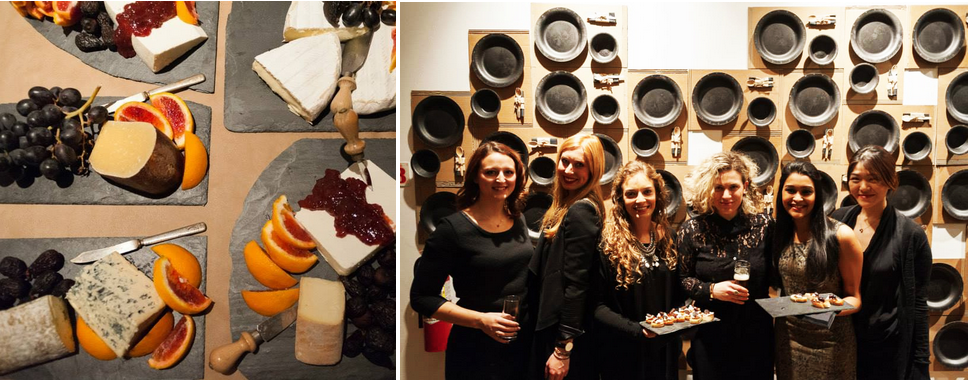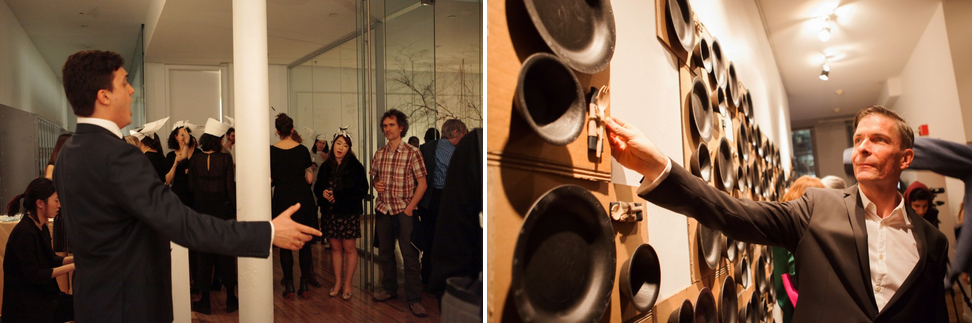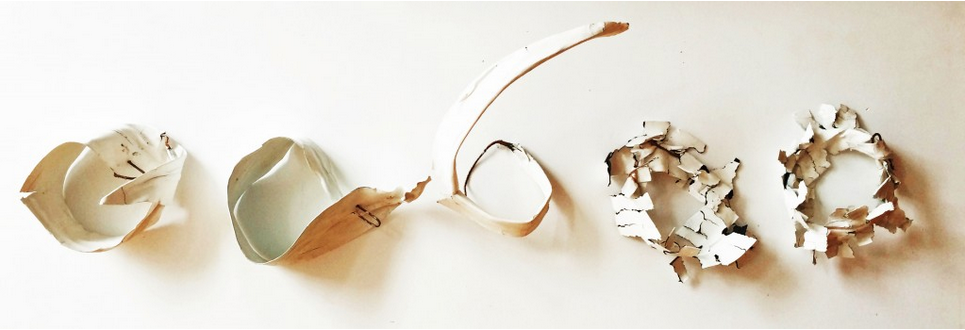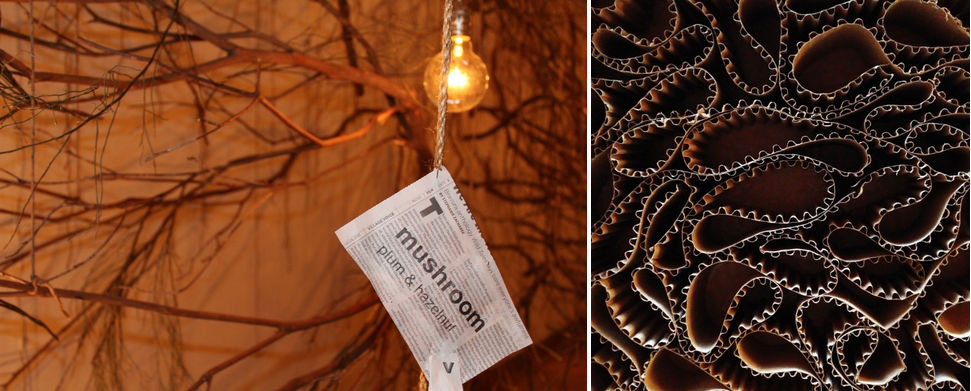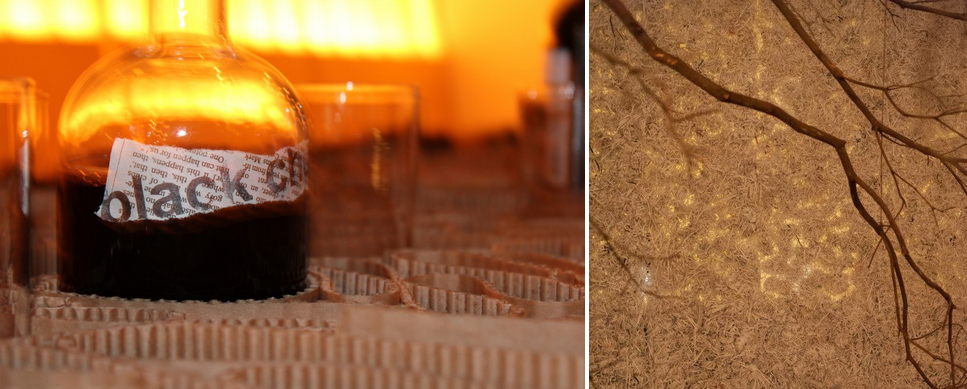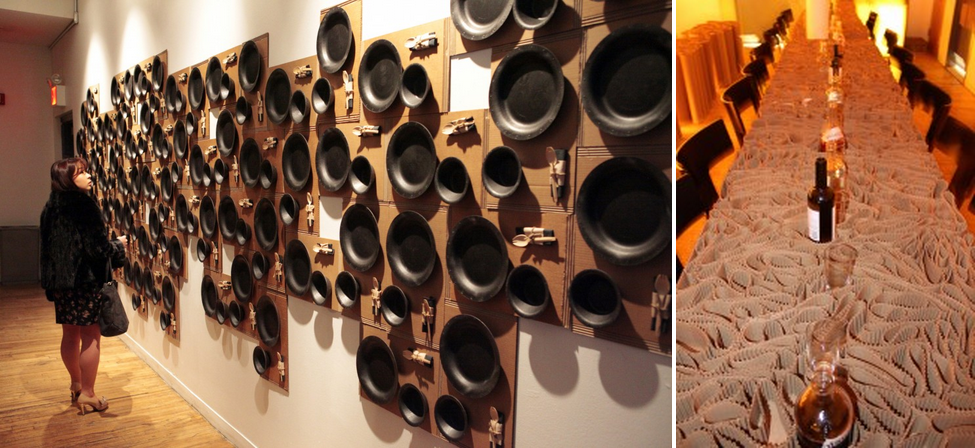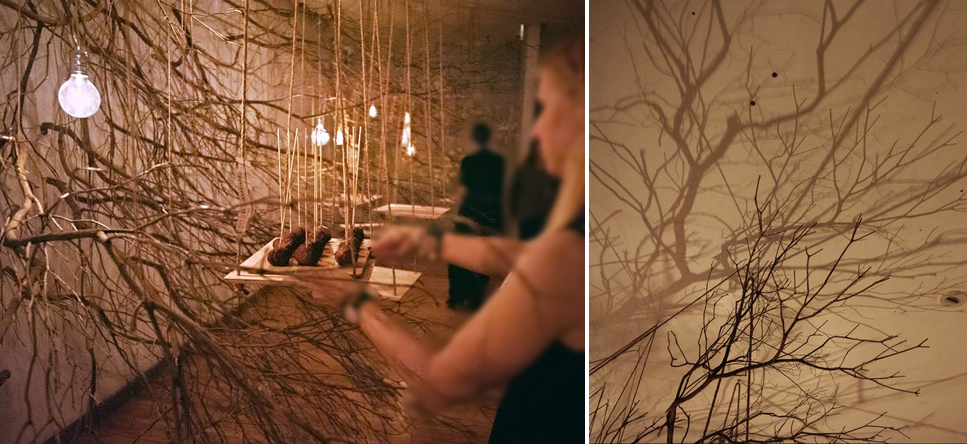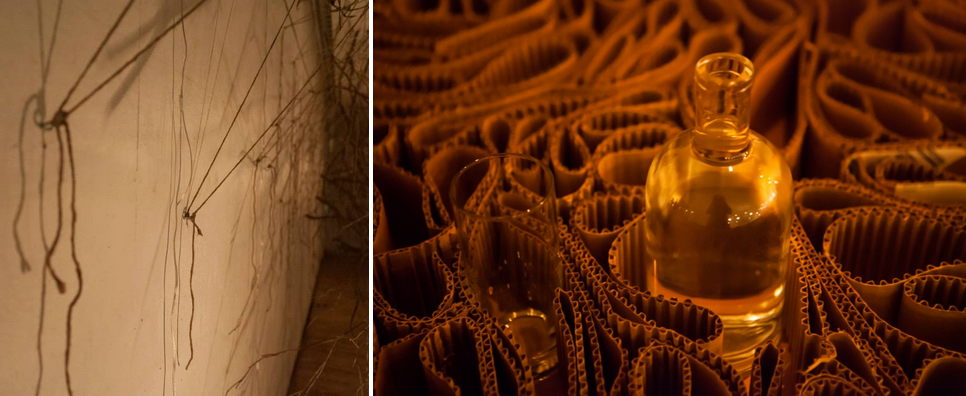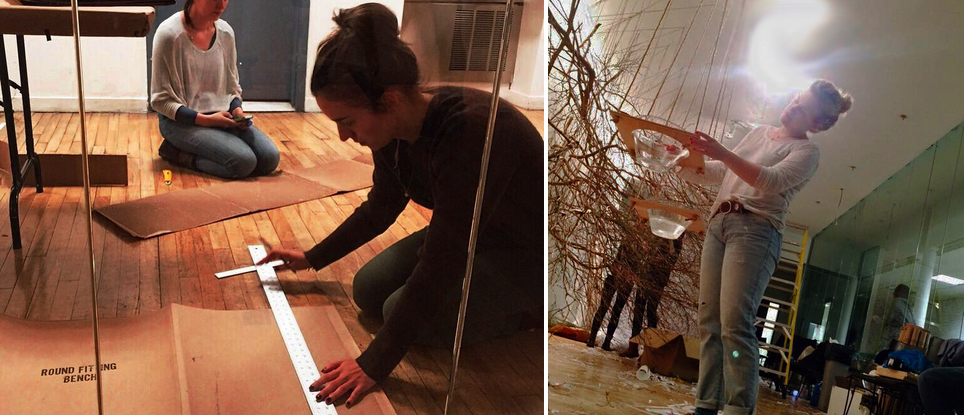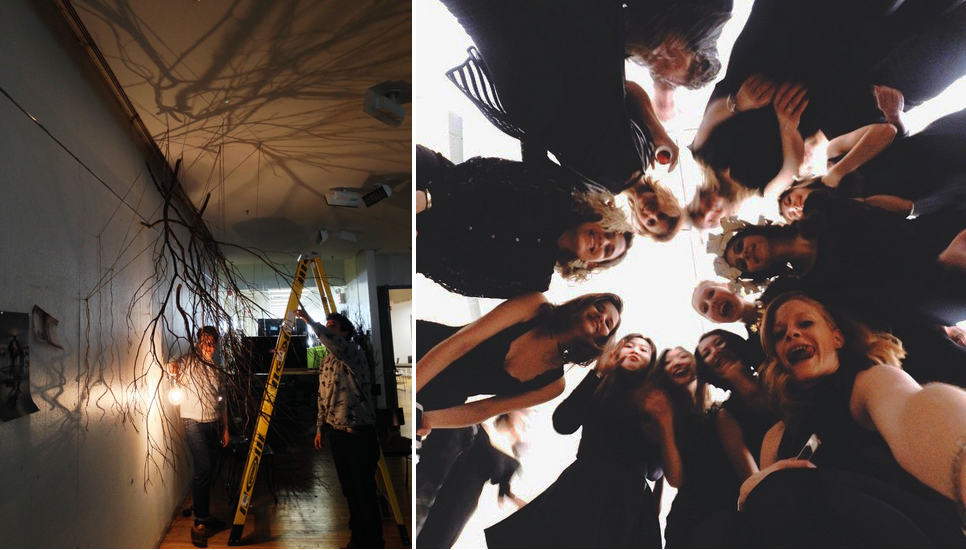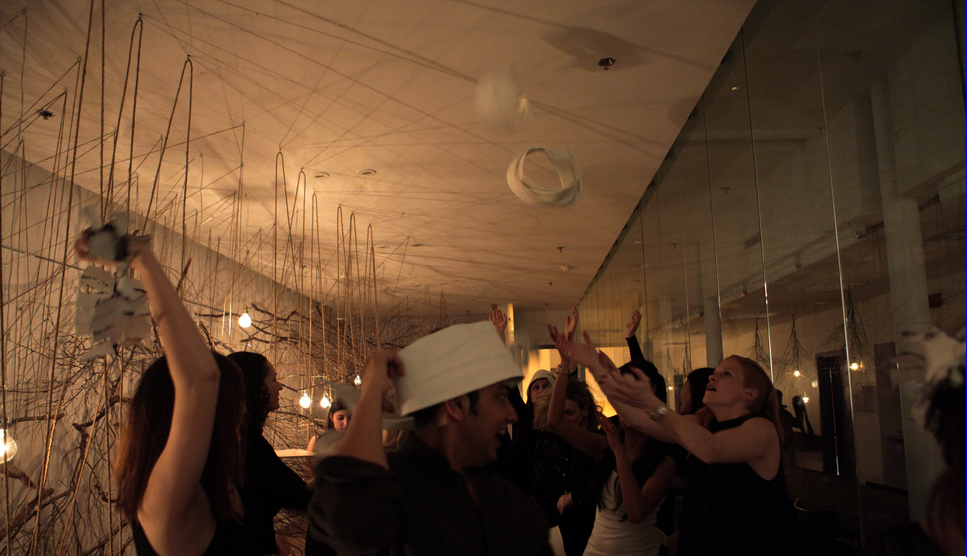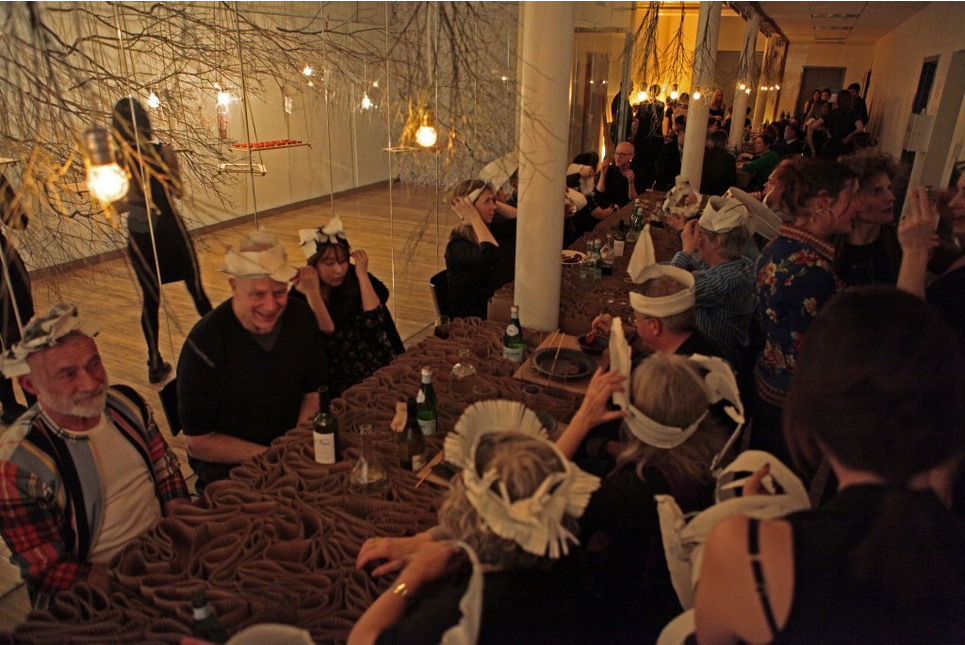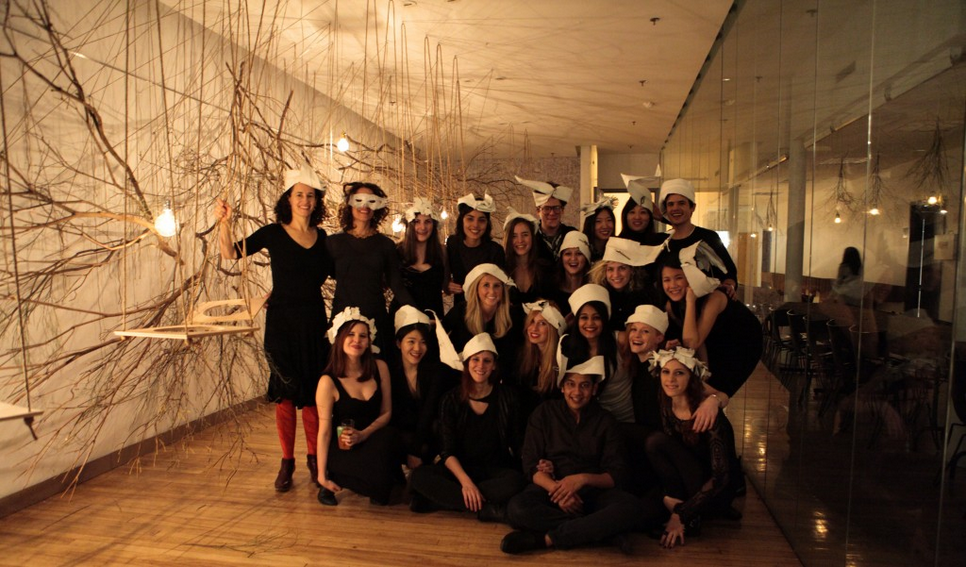Aftertaste 2015 Inside Imagination Symposium
February 27, 2015 to February 28, 2015
What does it take to imagine? We live in an era of environmental crisis and political unrest when complex systems and data analysis dictate projections of an uncertain future. Interiorists study existing places and are charged with imagining new worlds. In AfterTaste 2015, we draw inspiration from artists, educators, writers, and scientists who work to transcend what we know, to catapult culture into areas inspired and new.
Designers and thinkers who cultivate the imagination conjure futures, thinking beyond problem solving to that which has not existed before. What is the spark that creates new possibilities? How can we promote and develop imaginations that can envision and create interiors for an unknown future, rather than being beholden to the past? How can we cultivate the unknown in a culture increasingly defined by big data and digital devices of distraction?
On February 27 and 28, 2015, imagination alchemists, designers and experts gathered to think and enact new possibilities and alternative paths through the interior of the imagination. The schedule of events was as follows:
Schedule
February 27, 2015, Location: Tishman Auditorium
6:00 pm - 8:00 pm
+ Daniel Carter + Mathias Kunzli + Michael Schober, PhD
February 28, 2015, Location: Kellen Auditorium
2:45 pm - 6:00 pm
+ Gary Graham
Location: Kellen Auditorium
10:00 am - 12:30 pm
+ Kyna Leski
Location: Kellen Auditorium
10:00 am - 12:30 pm
+ David Lewis
Location: Kellen Auditorium
2:45 pm - 6:00 pm
+ Shannon Mattern, PhD
Location: Kellen Auditorium
2:45 pm - 6:00 pm
+ Joan Richards, PhD
Location: Tishman Auditorium
1:30 pm - 2:30 pm
+ Jean Taylor
Location: Kellen Auditorium
10:00 am - 12:30 pm
+ Linnaea Tillett, PhD
Location: Kellen Auditorium
2:45 pm - 6:00 pm
+ Gael Towey
Location: Kellen Auditorium
10:00 am - 12:30 pm
+ John Warner, PhD
Participants
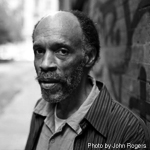
Daniel Carter
Daniel Carter is a musician and writer. In the 1950s he sang in doo-wop groups, took clarinet lessons, played in school bands and with the 49th Army Band. Since moving to New York City in the 1970s, he has sought out musicians and situations that encourage free expression, playing in soul bands and avant-garde jazz groups. He has always tried to transcend genre-boundaries and he has performed, recorded, and/or toured with many musicians including Other Dimensions in Music, William Parker, Matthew Shipp, Gerald Cleaver, Sam Rivers, Sun Ra, Cecil Taylor, Alan Silva, David Miller, C. Spencer Yeh, Karl Berger, Yoko Ono, Sean Lennon, David Ware, Don Cherry, Yo La Tengo, D.J. Logic, Thurston Moore, Federico Ughi, and many, many others.
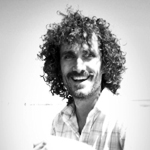
Mathias Kunzli
Hailing from Switzerland, multi-disciplined drummer/percussionist Mathias Kunzli has become ubiquitous in the New York City music scene. In 1995, Kunzli received two scholarships from Boston’s prestigious Berklee College of Music and moved to the States. Kunzli has appeared in some of the world’s most prestigious concert halls and festivals including Carnegie Hall, Royal Albert Hall, Sidney Opera House, Avery Fisher Hall, Montreal Jazz Festival, Montreux Jazz Festival, Monterey Jazz Festival, Konzerthaus Copenhagen, numerous arenas around the US and many more. Recently, Mathias released his first album. “Playground” is a live recording of an all-improvised solo-show in NYC. As a drummer and percussionist he has had the chance to collaborate with artists as varied as Regina Spektor, Moby, Lauryn Hill, Yo-Yo Ma Silk Road Project, Airto Moreira, Flora Purim, Vieux Farka Toure, Randy Brecker, Bob Berg, Marc Ribot, John Zorn’s Electric Masada, Alessandra Belloni, Jamey Haddad, Yanka Roupkina, Theodosii Spassov, Bakithi Kumalo, Savina Yannatou, Dave Samuels, The Paul Winter Consort, Nadja Salerno-Sonnenberg, Frank London, Gina Gershon, Keyhan Kalhor, Mikael Burishnikov, Mark Gould, Mary Wilson, Steve Gorn, and Howard Johnson.

Michael Schober, PhD
Michael Schober (Ph.D. Psychology, Stanford University; Sc.B. Cognitive Science, Brown University) is Professor of Psychology at the New School for Social Research in New York City, as well as Associate Provost for Research at the New School. His research examines shared understanding (or misunderstanding) and coordinated action in studies of casual conversations, standardized interviews, and musical performances and improvisations. He is interested both in how the primary participants (e.g., speakers, musicians) in an interaction understand it as well as in how other listeners understand it–audiences to live or recorded performances, eavesdroppers to conversations, etc. He also studies how the mode of communication (e.g., remote video chat, asynchronous texting, social media broadcasting) affects interaction and understanding, in our era of rapid proliferation of new modes and choices. His research is informed by his performance experience as a classical pianist who specializes in chamber and collaborative music, and in performances that explore how new technologies can enhance audience experience.
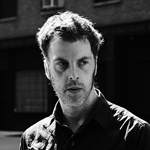
Gary Graham
Gary Graham is a designer with the visionary eye of a fine artist and a passion for process and traditional craft. Inspired by a deep sense of history that goes beyond fashion, Graham references and reinterprets idiosyncratic elements from period influences, eclectic art and outsider cultures. Juxtaposition is key: tone and tactility, raw and refined, dark and light, innocence and seduction, fantasy and utility. Signature elements—washed and dyed fabrics, intricate detailing, fluid silhouettes—contrast and coalesce to lend an ethereal air of romance and discreet drama. The result: a renegade glamour without artifice that endures from season to season as each collection evolves from the last, imbued with a rich sense of the serendipitous journey entailed. Born and raised in Wilmington, Delaware, Graham studied painting at the Maryland Institute College of Art and subsequently graduated with a BFA from the School of the Art Institute of Chicago. The designer launched his first collection in 1999 which was sold at Soho’s iconic If Boutique. In 2006, Graham opened the first designer clothing boutique at ABC Carpet & Home in New York. Shortly thereafter, in 2009, Gary Graham established his first flagship store in Tribeca.

Kyna Leski
Kyna Leski has invested her life in navigating the creative process. She has done this through her teaching as a Professor of Architecture at The Rhode Island School of Design; through her design work as a founding principal of 3six0 Architecture and her practices as an artist, aspiring/practicing actor and writer. She has spoken about the creative process at different universities in the U.S. and abroad and gave a Main stage presentation at PopTech in 2009. Currently, she is writing a book, called Creativity's Arc (MIT Press). Kyna Leski earned a B.Arch from The Cooper Union School of Architecture in 1985 and M.Arch from Harvard University’s Graduate School of Design in 1988. She is an avid rower who can be found most mornings before dawn on the Seekonk River and Narragansett Bay in Providence.

David Lewis
David J. Lewis is founding principal of LTL Architects, a design intensive architecture firm founded in 1997 with Paul Lewis and Marc Tsurumaki, located in New York City. LTL Architects realizes inventive solutions that turn the very constraints of each project into the design trajectory, exploring opportunistic overlaps between space, program, form, budget and materials. The principals are co-authors of the monographs, Intensities (Princeton Architectural Press, 2013), Opportunistic Architecture (Princeton Architectural Press, 2008) and Situation Normal....Pamphlet Architecture #21 (Princeton Architectural Press, 1998). The work of LTL Architects is in the permanent collections of the Museum of Modern Art, the San Francisco Museum of Modern Art and the Carnegie Museum of Art. David J. Lewis holds academic positions as Associate Professor at Parsons School of Design in the School of Constructed Environments and Adjunct Professor of Architecture at the University of Limerick, Ireland. David is a member of the Advisory Council of the College of Architecture, Art and Planning at Cornell University. He received his Master of Architecture from Princeton University, a Master of Arts in the History of Architecture and Urbanism from Cornell University, and a Bachelor of Arts from Carleton College.
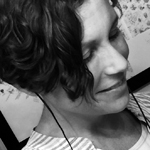
Shannon Mattern, PhD
Shannon Mattern is an Associate Professor in the School of Media Studies at The New School. Her research and teaching address relationships between the forms and materialities of media and the spaces (architectural, urban, conceptual) they create and inhabit. She writes about libraries and archives, media companies' headquarters, place branding, public design projects, urban media art, media acoustics, media infrastructures, and material texts. She's the author of The New Downtown Library: Designing with Communities (2007) and Deep Mapping the Media City (2015), both published by the University of Minnesota Press; and she’s a columnist for Places, a journal covering architecture, landscape, and urbanism.
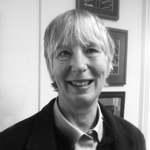
Joan Richards, PhD
Joan Richards is a professor in the History Department of Brown University, whose particular interests lie in the history of science and mathematics. Her first book, Mathematical Visions: Non-Euclidean Geometry in Victorian England, focused on the reception of a geometrical theory in the wider culture of nineteenth century England. Her second book, Angles of Reflection, was at once a memoir and an exploration of the logical work and family life of Augustus De Morgan. She is currently writing a three-generational family history of that focuses on changing views of reason in the family that includes De Morgan in the third generation. All of these projects—as well as her many mathematical historical articles—are linked by an abiding interest in the ways that mathematics has served as a model of reasoning that has developed in interaction with other approaches to the human mind, be they psychological, spiritual, physical, or phrenological.
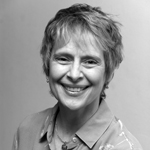
Jean Taylor
Jean E. Taylor is a teaching artist for Lincoln Center Education, working extensively in their local programs and international consultancies. She received Lincoln Center’s Directors Emeriti Award in 2012. Jean teaches Theatrical Clown and Aesthetic Inquiry for The New School for Drama’s BFA and MFA programs and most recently taught Clown for the World Economic Forum Global Leadership program at Columbia University. She presented at the International Teaching Artist Conferences in Oslo, Norway in 2012 and Brisbane, Australia in 2014. Her most recent performance work with director Eric Nightengale, True Hazards of Childhood, premiered at The Barrow Group in 2013. A trilogy of her theatre work is scheduled for Spring 2016. Additional performing work includes The Reclamation with Hilary Easton + Company and Snatches, a play begun at the 78th Street Theatre Lab, performed at The Edinburgh Fringe Festival, London’s New End Theatre, and presented on BBC Radio 4. Jean studied clown/movement with Philippe Gaulier, Ronlin Foreman, David Shiner and Merry Conway, among others. Her approach to theatrical clown has been published in Movement for Actors, Allworth Press. She is a member of The Teaching Artist Journal’s editorial board and a board member of The Maxine Greene Center for Aesthetic Education and Social Imagination.

Linnaea Tillett, PhD
Linnaea Tillett, PhD, is the principal of Tillett Lighting Design Inc., which she founded in 1983. An internationally-known lighting designer, environmental psychologist and public artist, she has a reputation for crafting highly-nuanced lighting programs that combine artistry, technical innovation and community enhancement. Ms. Tillett collaborates with leading landscape architects and designers, architects and artists, including: Maya Lin; Michael Van Valkenburgh Associates; Gustafson Guthrie Nichols; Toshiko Mori; Sasaki Associates; Diller Scofidio + Renfro; Quennell Rothschild & Partners; and Land Collective. Ms. Tillett was on the graduate faculty at Parsons for 20 years. She lectures and teaches nationally and internationally, including: University of Virginia; McGill University; Canada’s CCA; The Van Alen Institute as well as professional conferences in Madrid, Mexico City, Mumbai, and Bogota. Ms. Tillett holds Master’s and Doctorate degrees in Environmental Psychology from the Graduate School and University Center, City University of New York, and a Bachelor’s degree in Philosophy from University College, London.
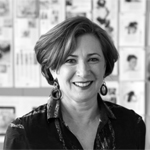
Gael Towey
Gael Towey’s great love is storytelling. “Portraits in Creativity,” a series of short-form documentary videos directed and produced by Towey, seeks to capture the bravery of artists and artisans, and delights in the visual seduction of the creative process. The subjects of these films are experienced artists who follow their instincts. Using their knowledge of craft and materials, they investigate, explore and find inspiration. They are comfortable saying, “I don’t know where this will take me.” These videos are not meant to be comprehensive; they tell the story of one moment in these artists’ careers. In 1990, as Creative Director, Towey helped launch Martha Stewart Living. She designed the inaugural issue, initiating the magazine’s distinct and iconic visual style that would give life to the joy of creativity. After 22 years at the creative helm of the company, Towey stepped away in order to pursue her long-standing interest in narrative.

John Warner, PhD
John is the recipient of the 2014 Perkin Medal, widely acknowledged as the highest honor in American Industrial Chemistry. He received his BS in Chemistry from UMASS Boston, and his PhD in Chemistry from Princeton University. After working at the Polaroid Corporation for nearly a decade, he then served as tenured full professor at UMASS Boston and Lowell (Chemistry and Plastics Engineering). In 2007 he founded the Warner Babcock Institute for Green Chemistry, LLC (A research organization developing green chemistry technologies) where he serves as President and Chief Technology Officer, and Beyond Benign (a non-profit dedicated to sustainability and green chemistry education). He is one of the founders of the field of Green Chemistry, co-authoring the defining text Green Chemistry: Theory and Practice with Paul Anastas. He has published over 200 patents, papers and books. His recent work in the fields of pharmaceuticals, personal care products, solar energy and construction and paving materials are examples of how green chemistry principles can be immediately incorporated into commercially relevant applications. Warner received The 2004 Presidential Award for Excellence in Science Mentoring, the American Institute of Chemistry's Northeast Division's Distinguished Chemist of the Year for 2002 and the Council of Science Society President’s 2008 Leadership award. Warner was named by ICIS as one of the most influential people impacting the global chemical industries. In 2011 he was elected a Fellow of the American Chemical Society and named one of “25 Visionaries Changing the World” by Utne Reader.
